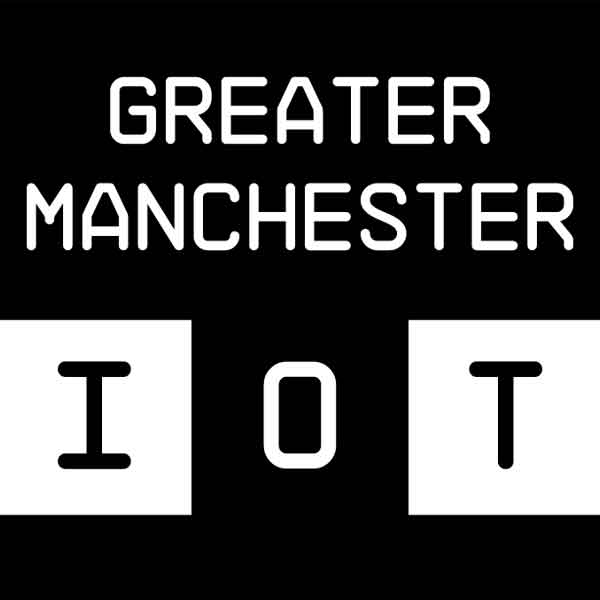
CertHE Data Analyst
Full-time
Part-time
One year
Two year
September 2026
In a nutshell
Data Science is a fast-growing interdisciplinary field which combines statistics, machine learning, Artificial Intelligence and data analysis to extract insights from data. This course will introduce you to the fundamentals of Data Science and data analysis and give you practical experience working with industry-standard tools, systems and programming languages. Through problem-based learning, practical computer-based workshops and group activities, you will gain the skills and knowledge you need to succeed, to an industry agreed standard.
What is a CertHE?
A Certificate of Higher Education (CertHE) is a UK higher education qualification equivalent to the first year (Level 4) of a full-time Bachelor's degree, providing foundational knowledge in a specific subject area
You will:
- Be studying at a university with longstanding links in Data Science, giving you maximum employment and placeholder opportunities
- Broaden your understanding of data science, machine learning and AI, some of the most 'in demand' skills in the modern economy
- Gain experience using programming languages such as Python and SQL
- Learn through hands-on exercises, group activities and live industry briefs, and work with messy, real-world datasets in realistic, problem-based scenarios
- Build the practical skills you need for a broad range of career paths within data science and data analysis
- Develop your skills using a wide-range of industry-standard tools for data visualisation, statistical analysis and Big Data analytics
This is for you if...
you are interested in finding out more about Artificial Intelligence, machine learning and Big Data
you have an enquiring mind, with a practical and analytical approach to problem solving
you enjoy working with data to spot patterns and trends or to solve problems
All about the course
Course Delivery
This course has been designed alongside our industry partners to ensure that it meets the needs of industry. Modules that make up the programme have been developed as new learning experiences bespoke to the course, which will give you a concentrated two-year experience to prepare you for employment or top-up study.
Find out more about the modules below. The structure reflects a full-time route:
Introduction to Data Analysis with Python
In this module, you will be introduced to the Python programming language and will build your skills working with a range of Python libraries for analysing, manipulating and visualising data, including NumPy, Pandas, SciPy, Matplotlib and Seaborn. Based around practical exercises and challenges, this module will develop your problem-solving skills and proficiency in Python. This module will also focus on developing your computational thinking, challenging you to think like a computer scientist when tackling problems.
Databases
This module will introduce you to relational databases and the fundamentals of Structured Query Language (SQL). In the first half of the module, practical workshops will introduce you to using SQL to query, extract and analyse data. In the second half, you will learn how to design a database and take into consideration issues such as data security, recovery and integrity.
Probability and Statistics
R is a widely used programming language in statistics, used to assess the governing company's financial performance, as well as other performance indicators, for example, patient outcomes for the NHS. You will undertake practical assessments from companies, evaluating statistical performance.
Introduction to Business Intelligence
This module sheds light on the use of business intelligence (BI) systems in organisational scenarios. The module will provide you with a broad set of skills applicable to the origins and evolution of BI systems, as well as distinctions between characters, data, information and knowledge.
Students will also learn about BI Systems, Data and Information, Problems with data, Data Warehousing, OLAP and Data Mining.
Applied Machine Learning
This module will introduce you to the core concepts of supervised and unsupervised machine learning, and how we can use machine learning to discover patterns in data and make predictions.
The emphasis of the module is on practical application and you will use the Python programming language, and libraries such as Scikit Learn, to implement machine learning algorithms and build predictive models.
Data Visualisation
In this module, you will consider the importance of good data visualisation for communicating with data. You will learn the principles and theory behind data visualisation, best practices when visualising data and how to avoid misleading visualisations. Practical workshops will introduce you to industry standard tools for building data dashboards and reports and, across the module, you will create your own portfolio of dashboards and data stories.
We take a flexible approach to our course delivery that promotes diversity and inclusivity and provides a blended learning experience, which will vary to meet specific programme requirements. This learning time includes formal lectures and interactive activities such as seminars, tutorials, practical sessions, laboratory and studio learning. Smaller classes may be used to support collaborative activities such as project and group work and presentations. A range of different assessments and feedback is offered to meet the needs of both our diverse student body and specific subject needs.
Our undergraduate courses are normally made up of 20 credit modules which are equal to 200 hours of learning time. A three-year degree qualification typically comprises a total of 360 credits (120 credits per year).
Please note that it may not be possible to deliver the full list of options every year as this will depend on factors such as how many students choose a particular option. Exact modules may also vary in order to keep content current. When accepting your offer of a place to study on this programme, you should be aware that not all optional modules will be running each year. Your tutor will be able to advise you as to the available options on or before the start of the programme. Whilst the University tries to ensure that you are able to undertake your preferred options, it cannot guarantee this.
Frequently Asked Questions
What is a CertHE qualification?
A Certificate of Higher Education (CertHE) is a UK higher education qualification equivalent to the first year (Level 4) of a full-time Bachelor's degree, providing foundational knowledge in a specific subject area.
Greater Manchester Institute of Technology
Located across England, Institutes of Technology (IoTs) are a national network of partnerships between local colleges, universities, and leading employers.
We are a proud partner in the Greater Manchester Institute of Technology. This means as a student on this course you will benefit from being part of the University of Salford community, with access to our facilities and support, and taught by our tutors. You will also be part of the GMIoT network, with access to additional events and activities.
What about after uni?
EMPLOYMENT
Demand for data scientists outstrips supply and there is continued demand for qualified professionals across many global industries. Recent government commissioned research shows that almost 50% of businesses are recruiting for roles that require hard data skills. On completing this course, you could apply for junior roles in data analysis or data science.
What you need to know
APPLICANT PROFILE
As an applicant for this course, you will be interested in working with data and curious about the fields of Artificial Intelligence and Big Data. You will have gained some aptitude for mathematics at GCE A-Level (or equivalent) and have an interest in applying your knowledge to work with real-world datasets.
ENGLISH LANGUAGE REQUIREMENTS
All of our courses are taught and assessed in English. If English is not your first language, you must meet our minimum English language entry requirements. An IELTS score of 6.0 (no element below 5.5) is proof of this, and we also accept a range of equivalent qualifications.
Read more about our English language requirements, including information about pathways that can help you gain entry on to our degree courses.
UCAS tariff points
72 points
A level
C or above in Maths
Salford Alternative Entry Scheme (SAES)
We positively welcome applications from students who may not meet the stated entry criteria but who can demonstrate their ability to pursue the course successfully. Once we receive your application, we'll assess it and recommend it for SAES if you are an eligible candidate.
There are two different routes through the Salford Alternative Entry Scheme and applicants will be directed to the one appropriate for their course. Assessment will either be through a review of prior learning or through a formal test.
For further information, please contact: enquiries@salford.ac.uk.
HOW MUCH?
| Type of study | Year | Fees |
|---|---|---|
| Full-time home | 2026/27 | £9,535 per year |
| Part-time | 2026/27 | Part time fees are calculated on a pro rata basis |
The government has recently announced that university tuition fees for home students in England will increase every year in line with inflation from 2026 onwards. We are awaiting further guidance on how this will be calculated, and will update here and on our fees webpage as soon as details are announced, as well as communicate with any existing offer holders for September 2026.
Additional costs
You should consider further costs which may include books, stationery, printing, binding and general sustenance on trips and visits.
All Set? Let's Apply?
UCAS Code: GG10
Start Date(s): September
Duration:
One year full-time
Two years part-time
Enrolment dates
Student information
Terms and conditionsUCAS information
Course ID GG10
Institution S03

